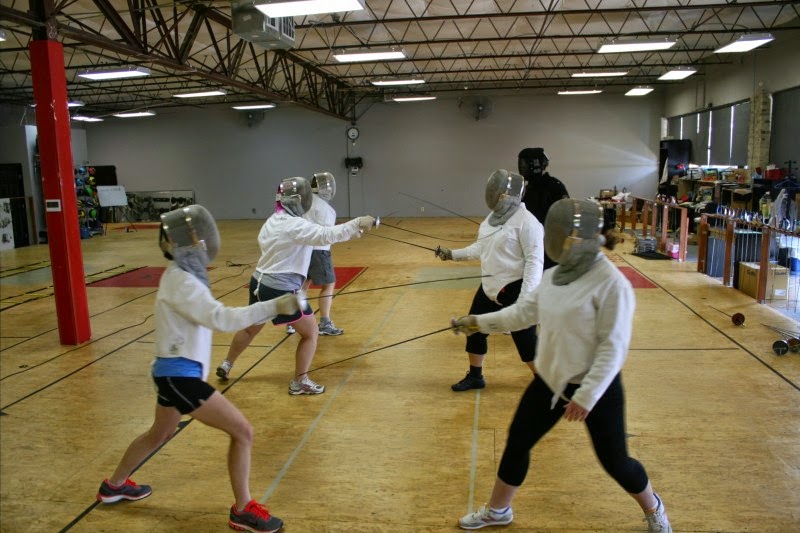There are only three Olympic size cycling tracks in the US, and the
Superdrome in Frisco conveniently happens to be one of them. After BMX we were feeling more comfortable with our cycling skills, but the velodrome quickly humbled us. It is intimidating to just look at the steep sides, which are banked 44 degrees in the turns, and 13 degrees in the straights.
 |
| Turn 2 |
You need to take a course before you're allowed to ride on the Superdrome, and Suzie was able to give us a private class. The bicycles are a little different than regular bikes - there are no gears, and no brakes, and the pedals are directly linked to the back wheel, so you constantly have to be pedaling. Our first lesson was simply getting on the bike and taking off. Suzie gave us all a push, and we rode around the concrete infield.
 |
| K starts off. |
 |
| J is off to the warm up track. |
Then we had to learn how to stop. You resist the forward pedaling motion with your legs to slow down, slip one foot out of the pedals, and when you think you're going slow enough you put that foot on the ground. After a few tries we were all able to stop successfully, which means we moved up to the track. We started out riding around the apron, then gradually moved further and further up the track. There is a minimum speed limit of 12 mph in order to not fall down in the turns.
The steep turns did not get any less intimidating as we rode on them. Although we were all doing a fine job riding, we were still a little nervous, and glad we had plenty of room on the track to spread out. We lined up along the rail to practice race starts, but we gave each other plenty of space.
 |
| No crowding |
 |
| To start, you push off the rail and pedal furiously |
The current Olympic lineup for track cycling includes the events of Keirin, Omnium, Pursuit, and Sprint. We never got comfortable enough to complete an event, but we are very proud of the fact that we rode on the Superdrome. We took a few tumbles, but no one got hurt. I think track cycling is the hardest event that we have done so far, mainly because of the fear of the track.























































